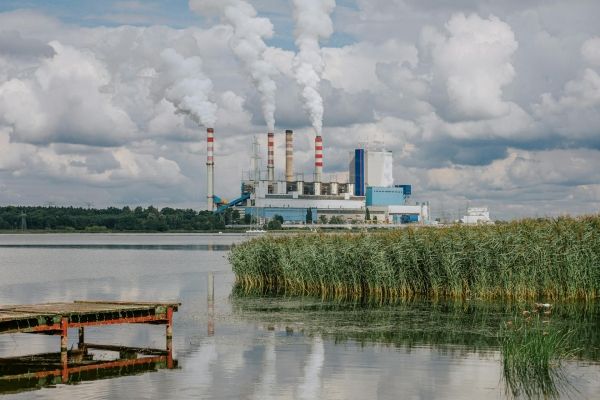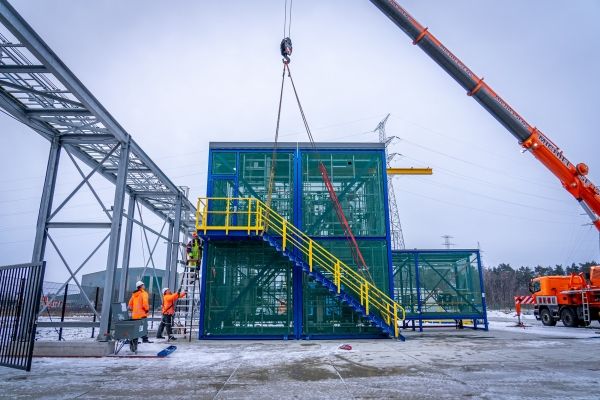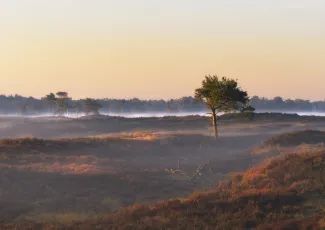
Balmatt site, Mol, Belgium
Closer to home, we find the first Flemish geothermal power plant with potential to be connected to a heat network. Just outside Mol, in the proverbial backyard of VITO (Flemish Institute for Technological Research), this power plant was built as part of a wider scientific study on geothermal heat in Flanders.
In the beginning
In 2007, a seismic campaign showed that the north of the Flemish provinces of Antwerp and Limburg were potential hotspots for geothermal energy.
In 2013, the ERDF project Geothermal 2020 was launched to investigate the potential of geothermal heat through deep geothermal energy in the Kempen region. This project was underwritten by the Enterprise Agency, the Hermes Fund, and the province of Antwerp.
Therefore, at the start of the actual project in 2015, a workshop was also organised with local stakeholders on geothermal energy to create broad support for geothermal energy as a sustainable energy source. After all, this technology has already proven itself abroad, and through the research that would take place under the leadership of VITO, the aim was to proceed transparently with regard to the challenges but also the economic benefits that geothermal energy can generate.
Later in 2015, the first exploratory drilling then started at the Mol site. They then drilled 3600m deep.
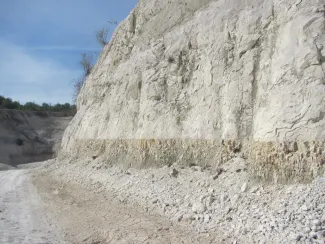
Eureka!
In 2016, they found water with a temperature of 138° C at a depth of 3,400m: hot enough to do hydrothermal geothermal, and possibly also generate energy.
In 2017, the foundation stone of the geothermal power plant was laid, and in 2019 it began trial operation.
Indeed, in order to assess whether geothermal energy is possible in Flanders, the ERDF project required some concrete questions to be answered: one had to have a view of the deep subsoil, the energy demand in a particular region and the possibility of heat storage. Through seismic campaigns and further research on how to convert geothermal potential to meet heat demand, VITO set out to find the answers.
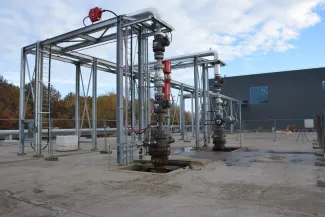
The next steps towards tomorrow's energy
Currently, research is focusing entirely on the impact of geothermal heat extraction on subsurface stability. To this end, a number of adjustments were made to the geothermal power plant and the associated seismometer network in 2020. The modifications should enable more precise investigations into the cause of induced vibrations.
From November 2021 to November 2022, four test phases passed, a few of them even lasting more than four months. In the process, the plant pumped 206 000 m³ of water and supplied 7 935 MWh of heat to the heat network of VITO, SCK-CEN and Belgoprocess. This brings the total of all test phases to a saving 912 500 m³ of natural gas, equivalent to the average annual consumption of 466 households.
Extensive seismometer network
The extended seismometer network detects more and smaller vibrations. Only seven tremors had a magnitude of 1.0 or more on the Richter scale. One of these occurred during the start-up of test phase 11. That's when the seismic monitoring network on and around the geothermal power plant detected a tremor with a magnitude of 2.1 on the Richter scale on 16 November 2022 at around 10am.
Additional seismic survey
At VITO's request, Mol and Dessel residents have reported what they have felt from this vibration. This allows researchers to accurately map the above-ground effects of the vibration.
In addition, in October 2020 they started seismic research in the region around Lommel to investigate the potential for geothermal heat there too. That way, this can be taken into account if the geothermal project is expanded further. More knowledge leads to a better end result for all parties.

Furthermore, it was decided to expand the network of seismometers near the injection point of the Balmatt power station. In addition, in October 2020 they will start seismic surveys in the region around Lommel to investigate the potential for geothermal energy there too. That way, this can be taken into account if the geothermal project is expanded further. More knowledge leads to a better end result for all parties.
The timeline
The idea
December 2009
VITO was looking for a sustainable energy alternative for a new building. The genesis of the research into the possibilities of deep geothermal energy, or geothermal heat, in Flanders.
Seismic campaign
Location: Mol, Dessel, Retie
First of all, an answer must be found to the question: what is underground? Can the conditions for geothermal energy be met?
Feasibility study
Technical & economic possibilities
Is it technically and economically possible to set up a plant at these sites with the aim of supplying heat to the existing VITO site, as well as generating electricity from waste heat?
Seeking investors
On a mission
Outings with local politicians and CEOs to existing geothermal power plants in Germany should ensure that local support is increased.
Launch ERDF Geothermal 2020 project
A general, European project that enjoys the support of various actors:
- Enterprise Agency
- Hermes Fund
- Province of Antwerp
A neighbourhood consultation immediately follows, serving as a platform if there were any objections. This is not the case, and teostemming is given to drill a first well with the help of the Flemish government and Niras. In March 2014, Electrabel's old coal-fired power plant is razed to the ground.
Start first drilling
STEM tours start
During the first test wells, it is possible for STEM students to visit the site and read more about the process of geothermal energy. In 2016, 1,300 students visited the site, and this number rose to 1,800 in 2017.
Pump test
January 2016
An initial pumping test is done to check the chemical composition of the pumped water. The results are in line with scientific expectations, so one can move on to the next phase.
March 2016
One starts the second drilling so that eventually one obtains a doublet system: a production well where the water is pumped, and an injection well where the cooled water is re-injected into the same stratum. These wells are located next to each other on the surface. Underground, however, the injection well is drilled at an angle so that the water is injected far enough away from the production well.
April 2016
Schoolchildren create a musical OntSTEMd about the concept of geothermal heat and what it could mean for the future of sustainable, renewable energy.
Further plant construction
August 2017
Construction of the heat network to heat VITO, SCK and Belgoprocess.
September 2017
Start of construction of the plant itself.
November 2017
VITO wins the Audience Award for best science communication with the musical OntSTEMd.
December 2017
Start of the third drilling for a deeper earth layer - Devonian - at 4000m depth.
Production in sight
May 2018
Start of construction of first heat grid in Mol.
October 2018
The plant is commissioned and made ready for use step by step.
Further research in the region
Currently, research is focusing entirely on the impact of geothermal heat extraction on subsurface stability. To this end, in 2020 a number of adjustments were made to the geothermal power plant and the associated seismometer network.
In October 2020, seismic surveys will start in the region around Lommel to investigate the potential for geothermal heat there too. That way, this can be taken into account if the geothermal project is further expanded.
Research on effects of geothermal heat extraction
Since November 2021, VITO researchers have continued research into the effects of geothermal heat extraction on the deep subsurface, into the cause of induced vibrations.
The geothermal heat produced during the test phases will not be wasted by VITO. It is used to feed the heat network of VITO and SCK/CEN. This allows, depending on the season, 30 to 100 % of the heat demand of VITO and SCK/CEN to be met.
